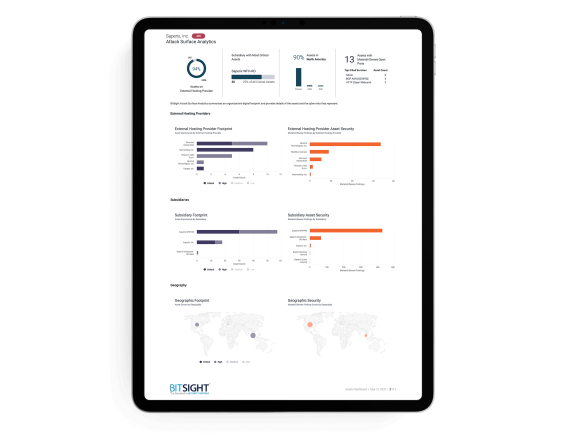Request your free custom report and see how you can start reducing your cyber risk exposure across your digital ecosystem: cloud assets across all geos & subsidiaries; discover shadow IT; security risk findings; and more!
What is Attack Surface Monitoring?
Attack Surface Monitoring is a component of cybersecurity practices that involves the continuous identification, cataloging, and management of all your digital assets and vulnerabilities.
The goal is simple: prevent unauthorized access and cyber threats.
As your organization’s digital footprint expands, new cloud services, more work-from-home network connections, and a growing mobile workforce increase the size of your attack surface—and the complexity of monitoring it.
To maintain robust cybersecurity in an ever-expanding digital landscape, it is critical to understand three pillars of attack surface monitoring:
1. How to Perform an Attack Surface Assessment
An attack surface assessment is the initial step in attack surface monitoring, which involves:
- Inventory of Digital Assets: Documenting all hardware, software, and network components used by the organization.
- Identification of Potential Vulnerabilities: Pinpointing weaknesses that could be exploited by attackers within those assets.
- Security Posture Evaluation: Analyzing the current security measures and their effectiveness in protecting against potential threats.
2. Analyzing Assessment Results
Attack Surface Analysis delves deeper into the insights gained from the attack surface assessment.
This part of attack surface monitoring involves interpreting the data to understand the severity and potential impact of identified vulnerabilities. By doing so, organizations can prioritize their responses and tailor their monitoring efforts to the areas of greatest concern.
Crucially, attack surface analysis doesn't stop at identification. It extends into action, taking steps to mitigate security risks through strategic planning and remediation efforts.
This proactive measure is a cornerstone of comprehensive attack surface management (ASM), which encompasses a lot more than attack surface monitoring, including vulnerability management and vendor risk assessment.
3. External Attack Surface Monitoring
With more employees working remotely and from home, your attack surface becomes larger and more difficult to protect. Remote and home networks are often unmonitored and less protected. As a result, they’re more likely to be infected with malware and to expose vulnerable services.
External Attack Surface Monitoring (EASM) zeroes in on the part of the attack surface exposed to external entities. This monitoring is crucial for safeguarding interfaces that could be targeted by external threats and is a key aspect of holistic attack surface monitoring.
Attack Surface Monitoring FAQs
Get A Free Attack Surface Report
